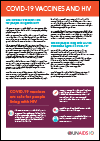Publications on People Living With HIV (PLHIV)
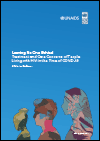
Resource | Publications,
This report highlights several challenges faced by people living with HIV in the country across the HIV care continuum. Issues on various facets of HIV care continuum such as access to HIV facilities and psychosocial support are surfaced and discussed. Policy and program recommendations that will help the in development of the national HIV program that is more robust, with or without the threats of COVID-19, are also presented.
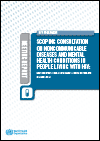
Resource | Publications,
In April 2019, WHO convened an expert scoping consultation in Geneva, Switzerland consisting of policy-makers, academics and partners from the HIV, noncommunicable diseases and mental health communities to discuss current evidence of chronic noncommunicable disease, the burden and risk among people living with HIV, review current norms and standards and ultimately to set priorities for technical areas and interventions for co-managing major non communicable diseases and mental health conditions among people living with HIV; and to inform the update of the 2016 WHO HIV consolidated guidelines on the use of antiretroviral drugs for treating and preventing HIV infection.
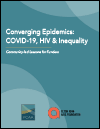
Resource | Publications,
Other key and evolving needs during the pandemic that, if left unaddressed, will continue to have a devastating impact on the health, well-being, and human rights of people at risk of or living with HIV include: increased mental health issues (anxiety, depression, trauma), gender-based violence (GBV) and violence at the hands of law enforcement and security structures, as well as lack of access to technology for information, care and services which have increasingly shifted on-line. Throughout this period, communities and CBOs have demonstrated incredible resilience, flexibility, and creativity in meeting their own needs—as they always have—and examples are shared in this report.
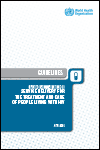
Resource | Publications,
These guidelines provide new and updated recommendations and good practice statements in the following areas: starting ART, including initiating treatment outside the clinic and support for same-day ART start; frequency of clinical visits and ART refills; measuring adherence; tracing and re-engagement in care for all populations; psychosocial support for adolescents living with HIV; task sharing for diagnostic services; and service integration.
This guideline seeks to provide support to Member States, programme managers, health workers and other stakeholders seeking to achieve national and international goals to end the HIV epidemic as a public health threat by 2030.
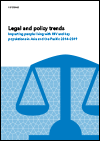
Resource | Publications,
This report provides a summary of key developments in the legal environment for HIV responses in Asia and the Pacific. It is the product of a desk review conducted for UNAIDS and the United Nations Development Programme (UNDP) in 2019. The report highlights key trends and developments in laws affecting people living with HIV and key populations in Asia and the Pacific over the five-year period 2014–2019.

Resource | Presentations,
Availability of disaggregated data is crucial for informed response against the HIV epidemic in the country. NCASC has developed and implemented the HIV Care and ART Tracking System to ensure the availability of HIV testing and treatment-related data in real-time at the national and subnational level. This is the first time that NCASC has analyzed and disseminated the top ten causes of death, LTFU and missing situation of PLHIV using disaggregated data.








